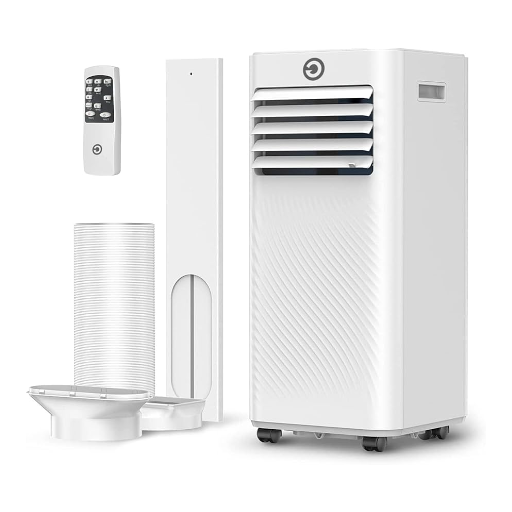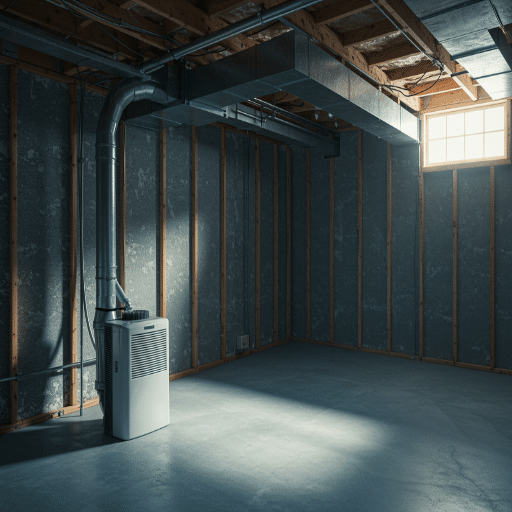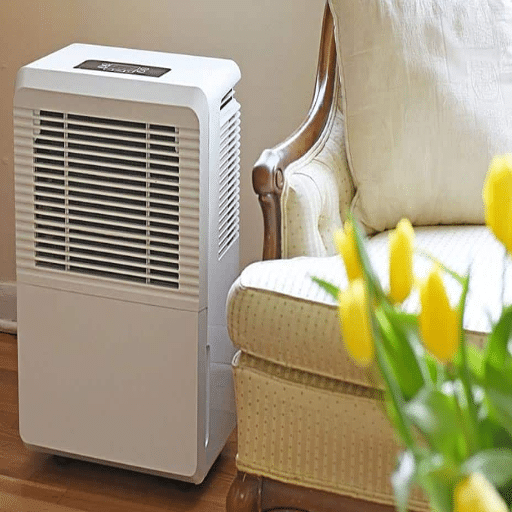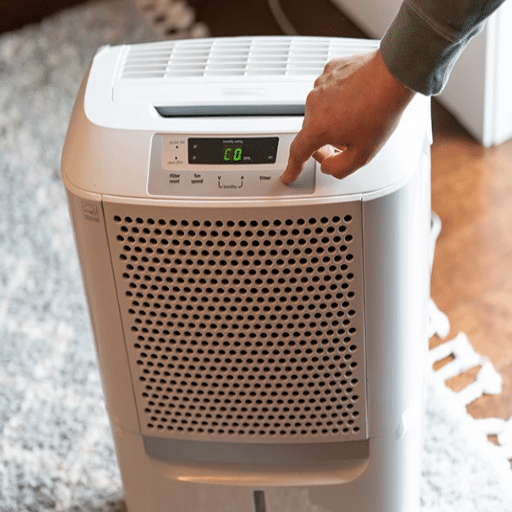When it comes to managing indoor comfort and air quality, energy efficiency and cost are often top concerns for homeowners. Both air conditioners (ACs) and dehumidifiers play crucial roles in creating a comfortable living environment, but they operate differently and serve distinct purposes. This raises an important question: Which is cheaper to run, an air conditioner or a dehumidifier? Understanding the energy consumption, operational mechanics, and practical applications of each device is essential to make a financially and environmentally savvy choice. In this article, we’ll break down the factors influencing the cost of running these appliances, helping you determine the most cost-effective solution for your specific needs.
Understanding the Basics of AC and Dehumidifiers
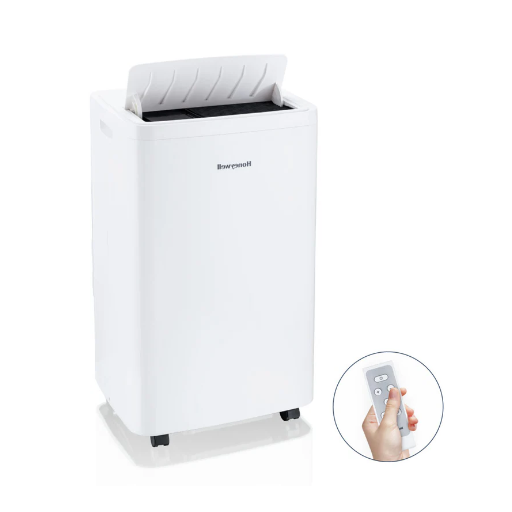
What is an Air Conditioner?
An air conditioner can be termed an electrical appliance used for treating indoor temperature by removing heat and moisture from the air. It takes in warm air through a refrigeration cycle and releases essentially cool air back into the space. The thing provides temperature control together with dehumidification so that a pleasant indoor environment is maintained.
A window-type air conditioner consists essentially of a compressor, a condenser coil, an evaporator coil, and refrigerant. The refrigerant absorbs heat from inside the air and carries it out through the system. Present-day air conditioners do come in many forms, such as window units, split systems, and central air systems, to name a few, depending on space needs and efficiency requirements.
Identified as one of the most energy-intensive appliances due to the cooling process, air conditioners are rated in terms of operational efficiency, such as SEER (Seasonal Energy Efficiency Ratio) or EER (Energy Efficiency Ratio). Although they can provide a very good measure of indoor temperature control, unfortunately, they consume so much energy that a high utility bill is almost a sure thing. Thus, it is cardinal for one to buy an energy-efficient unit and use it sparingly to balance comfort and cost.
What is a Dehumidifier?
A dehumidifier is a machine that, when operating in a house or commercial premise, reduces and keeps the humidity levels in the air. By extracting excess moisture, it allows the creation of an atmosphere wherein one can feel comfortable with the minimum of risk to problems that come with high humidity, such as mold, dust mites, or simple window condensation. They work best anywhere with high humidity levels, be it a basement, bathroom, or just an area with a damp climate.
Its basic principle involves drawing in warm, humid air to the dehumidifier through the action of a small fan situated inside. As air passes over cold coils or a refrigerant system inside the unit, moisture is condensed out. From here, water is collected in a removable tank or directed to a drain, while the remaining dry air is expelled back into the ambient environment. The use of desiccants, which are substances that absorb moisture, is found in some models, which is preferable in situations where temperatures are low.
In addition, dehumidifiers help in making life a little easier and healthier by keeping allergens at bay and saving furniture, electronics, and building materials from the detrimental effects of moisture. Having various types and sizes for dehumidifiers, from those small portable models for a single room to whole-home systems that tie into the HVAC system, allows buyers to select a model able to perform the specific functions needed in their environment.
Key Differences Between AC Units and Dehumidifiers
In essence, air conditioners and dehumidifiers operate differently but do interrelate in providing comfort indoors by modulating temperature and humidity. Air conditioners, because their purpose is to cool the air by removing heat and releasing it outside the building, inherently reduce humidity levels, albeit incidentally. A dehumidifier, on the other hand, removes moisture in the air, aiming to maintain decent humidity levels within the building without changing the ambient temperature.
The second big difference is in their operational mechanism. An air conditioner must undertake cooling cycles and work with refrigerants to cool a space, whereas a dehumidifier must work by either refrigerating or utilizing desiccants to somehow withdraw moisture from the air. This difference makes the air conditioners best suited for hot climates where cooling is a necessity, while dehumidifiers work in moist places prone to excess moisture basements or any other highly humid areas.
These two appliances are also differentiated in energy efficiency and design. Usually, dehumidifiers consume less energy in comparison to an air conditioner, as most of them do not lower ambient temperature to any great extent. On top of that, dehumidifiers tend to be smaller and portable to a certain extent, thus allowing for targeted humidity control. Vs air conditioners that are comparatively bulky and almost require installation services, especially in the case of central cooling. These variations highlight why understanding the climate control needs inside your home becomes pivotal while determining whether to go in for an AC unit, dehumidifier, or both.
Cost Comparisons: AC vs. Dehumidifier
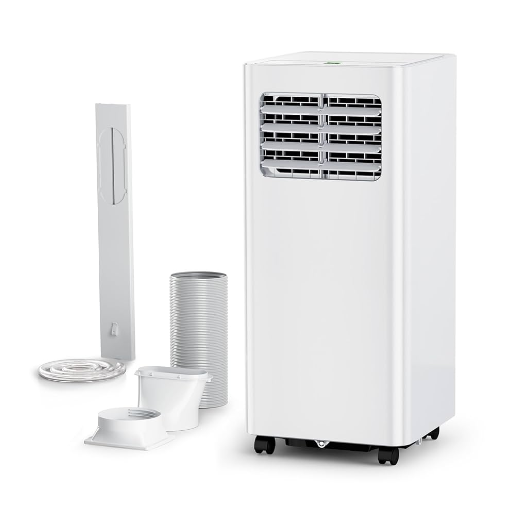
Initial Costs of AC Units and Dehumidifiers
In a price comparison, air conditioners usually prove to be pricier; after all, they are more complex items bearing advanced functions. A window air conditioner can typically cost anywhere from $150 to $550, and those operating as portable and split systems fall into the broader range from $300 to about $1,500, depending heavily on capacity and features. Central air conditioning systems do take the prize for being the most expensive air conditioning systems, with initial costs ranging anywhere between $3,000 to well over $7,000, and installation usually included.
Dehumidifiers, on the other hand, are usually affordable. Entry-level counterparts for small spaces overlook the $150 mark and go as low as $50. Higher capacity dehumidifiers for basements or vast square footage go for about $200 to $500. An abundance of fine features could mean smart controls and energy-efficient technologies, which will quickly set you back single-handedly about more than $700.
The scale of operations needs to be considered while deciding on these options, i.e., whether the machine is working for the localized or whole-home environment. Prices also tell of the size-capacity aspect of cooling or moisture removal, the technological aspects, and considerations of manufacturing convenience. End users should weigh these functional needs against cost constraints lest they end up spending unnecessarily.
Operating Costs: Which is Cheaper to Run?
Energy consumption is a critical data point when one compares operating costs. Usually, air conditioning units consume more electricity than dehumidifiers as they perform a more comprehensive cooling function involving chilling of air as well as humidity control. An average medium-sized air conditioner would draw energy from the range of 500 to 1,500 watts per hour. Standard dehumidifiers, on the other hand, consume anything between 300 to 700 watts per hour, depending on capacity and efficiency ratings.
Energy-efficient models stand to be a huge help in lowering the net operating costs of both appliances. Look for units with high Energy Efficiency Ratio (EER) ratings or units that carry the ENERGY STAR label, as these are symbols of optimum energy conservation. A dehumidifier that consumes 500 watts of power for three hours daily would cost around $0.22 in power bills, with the nationwide average for electricity being $0.15/kWh, which is less than most air conditioners when used similarly. In such a situation, however, with the air conditioner providing double duties, it may become economical to use an air conditioner, especially in a humid climate-wait to put in a standalone dehumidifier.
In the end, the choice between the two depends on the intended use, local climate, and frequency of operation. Investing in programmable or smart units with timers and sensors can further reduce energy consumption, which translates into long-term cost savings.
Energy Efficiency Ratings of AC and Dehumidifiers
An energy efficiency rating is necessary when judging the energy consumption and performance of an air conditioner and dehumidifier. Air conditioners are usually rated for efficiency using the Seasonal Energy Efficiency Ratio (SEER) or Energy Efficiency Ratio (EER). SEER is the cooling output for a typical cooling season divided by its total electric energy input over the same period, whereas EER is the efficiency under certain temperatures and conditions of measurement. The greater the SEER and EER ratings of an air conditioning machine, the less substantially it consumes in energy and cost.
Dehumidifiers, meanwhile, use the Integrated Energy Factor (IEF) as the standard rating system that measures the amount of moisture removed per kilowatt-hour (kWh) of electrical power consumed. New generation dehumidifiers have IEF ratings greater than 1.50 L/kWh, which is the starting figure set by the regulatory standards, indicating higher energy efficiency.
The ever-improving technology translates to higher efficiency ratings for both appliances. An example of this would be inverter technology-driven air conditioners that can vary the speed of the compressor according to the demand for cooling at any particular moment, thereby increasing SEER ratings to an unprecedented degree. Similarly, Energy Star-rated dehumidifiers employ state-of-the-art compressor systems that enable maximized IEF ratings, balancing performance optimally with electricity consumption.
Besides considering the ratings, it is wise to factor in AC capacity- BTU (British Thermal Units) and dehumidifier capacity- pints per day. A good match between unit capacity and area size or climatic condition ensures maximum efficiency in that it shall neither impart underperformance nor suck excessive energy.
Energy Consumption and Efficiency
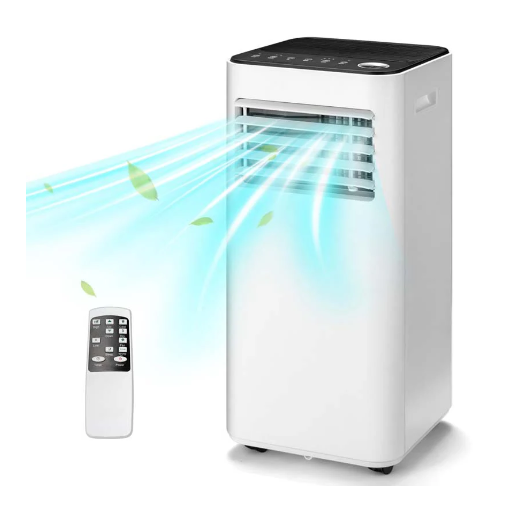
How AC Units Use Energy
Air conditioning systems operate by basically one heat removal process, wherein the heat is removed from the indoor environment and rejected into the outside. The standard refrigeration cycle consists of four main components: the compressor, the condenser, the expansion valve, and the evaporator. The refrigerant inside the system changes its state from liquid to gas and vice versa while exchanging heat during this process.
The biggest electricity consumer is the compressor, which requires a large amount of electricity to pressurize the refrigerant. This enables the heat release from the refrigerant at the condenser coils. After expelling its heat, the refrigerant passes through an expansion valve where its pressure is dropped so that it is cooled; then it travels to the evaporator coil to absorb heat. This cyclical process keeps the indoor temperature comfortable, and depending on the efficiency of the system and how long it runs, this process requires a massive amount of energy.
Newer models have inverter-type compressors, which alter the motor speed depending on the cooling load and, therefore, theoretically reduce energy consumption substantially in comparison with fixed-speed compressors, where the cooling circuit is repeatedly turned on and off. This, combined with proper maintenance such as cleaning or changing filters and ensuring good insulation, will result in the highest energy efficiency.
Dehumidifiers and Their Energy Use
The correct humidity level in an environment helps maintain indoor air quality while precluding typical concerns such as mold growth and dampness. However, energy requirements can be significantly affected by the operational conditions, including aspects of the dehumidifier’s size and efficiency rating. Most dehumidifiers use somewhere between 300 and 700 watts an hour, with capacity being the key factor. Models with larger capacities tend to use more energy since they are designed to extract more moisture from the air. The higher the energy efficiency ratio (EER) of a dehumidifier, the better it uses energy.
Improved energy efficiency is the essence of several advances in dehumidifier technologies while still ensuring an appropriate operational degree. Energy Star-certified dehumidifiers use 10 to 20 percent less energy than non-certified units because of superior compressor and design features. These units are designed to perform equally well, and yet, over time, save a considerable amount of money on utility bills. Some of the new generations of dehumidifiers are also equipped with smart features, including humidity sensors and programmable settings to engage operations based on real-time indoor conditions, maximizing energy utilization.
In the energy-efficient functioning of any dehumidifier, correct handling and maintenance are essential. Placement should be considered to achieve the best result; the unit needs to be in a central, open place, allowing maximum airflow. This, in turn, will keep the dehumidifier system from working unnecessarily hard. Regular cleaning of the air filter or filter replacement, checking and cleaning clogged air vents, and replacing broken seals also help conserve energy. And another tip would be to run the unit only when the humidity inside exceeds the recommended level, normally about 50 percent. Through technology advancement and responsible operation, modern dehumidifiers, therefore, are a key to making dehumidification energy-efficient.
Factors Affecting Energy Consumption
The energy consumption of a dehumidifier is influenced by eight interrelated factors, namely unit capacity, humidity levels, frequency of use, and environmental conditions. The rated capacity of a dehumidifier, usually expressed in pints per day, determines the energy consumption of the dehumidifier in question. A large-capacity unit can take away more moisture but consumes more wattage, especially if improperly sized for any given space. Smaller units may end up working longer to remove the same amount of moisture, thereby consuming similar or even more energy.
Besides, the ambient humidity level plays an important part. The compressor consumes the most energy as it has to work hard in removing moisture until the desired humidity level is obtained. Likewise, energy consumption varies but depends on the size and insulation efficiency of the space under dehumidification. Areas with poor insulation or extremely high air leakage can throw off units because these get to work more in compensating for the moisture ingress from outdoors.
The frequency of usage and length of operation also stand a chance of being contributing factors. Units on continuous operation or high settings consume a greater amount of electricity than units with timers or sensors for humidity. Other features, such as Energy Star-rated dehumidifier, are also well recognized for their ability to conserve energy due to efficient design and engineering of the latest compressors and fans. Analyzing and managing all these factors as a whole can go a long way in saving energy.
Humidity Levels and Comfort
Impact of Humidity on Comfort Levels
Humidity plays a pivotal role in indoor comfort, as it principally modifies temperature perception and air purity. Excessive humidity causes an overabundance of sweat that is not cooled off properly, leading to discomfort and, at times, health issues like heat stress. The extremely low humidity condition gives way to dry skin, nasal irritation, and respiratory discomfort, especially if one has existing conditions such as asthma. Generally, an optimal indoor relative humidity (RH) level is considered between the range of 30% to 50%, a level that serves as a benchmark for thermal comfort while posing fewer health issues.
Mold, mildew, and dust mite formation take root in conditions favoring excess moisture. Such organisms aggravate allergic reactions and asthma symptoms. Such conditions are especially prevalent in buildings devoid of adequate ventilation or a dehumidification mechanism. Conversely, very dry conditions help build static electricity, where wood materials in furniture or musical instruments can get damaged due to shrinkage. These wide fluctuations in humidity level stand as solid proof to maintain steady and balanced humidity indoors to promote health and instead survive against structural or material damages.
Humidity control should be implemented to set up the indoor environment for residences and businesses. Smart dehumidifiers and humidifiers, augmented by the rise of IoT systems, provide a real opportunity to keep track of and adjust climate parameters at real-time levels. In addition to real-time environmental monitoring, meteorological data can be used in a predictive manner to help curb instances of unnatural humidity levels. Through these technological means, together with proper system maintenance of HVAC, comfortable and healthy registered MARKs will be established with minimal adverse effects on energy usage and sustainability.
When to Use a Dehumidifier
More practically, a dehumidifier is used in situations where excessive moisture can destroy structures, jeopardize human health, or affect operational efficiency. Humidity above 60% is a perfect breeding ground for mold spores, mildew, and dust mites, all of which can worsen the indoor air quality conditions and hamper respiratory problems like asthma or allergic reactions. Putting it in basements, crawl spaces, or any relatively unventilated areas prone to moisture would do the ideal job.
Dehumidifiers become key in industrial or commercial spaces where moisture-fighting measures are needed to mitigate equipment corrosion or maintain product integrity within prescribed parameters and environmental standards. For example, in data centers or archive rooms, dehumidifiers would make sure that moisture damage is kept away from sensitive equipment or documents.
Conducting relative humidity measurement at source and on real-time basis enables users to turn on dehumidifiers only when required, hence saving energy. Integrated with predictive analytics, the system would deliver usable insights to avert peaks of humidity from occurring, hence aligning operations with sustainability principles and optimal resource utilization.
How AC Units Help with Humidity Control
Air conditioning units form a crucial component in the control of the indoor humidity level by condensing the excess moisture from the atmosphere. Fundamentally, warm indoor air, as it passes over the evaporator coils of an air-conditioning system, cools down below its dew point, which results in the condensation of water vapor into a liquid state. After condensation, the moisture is collected and drained away, leaving cooler and relatively drier air flowing into the space.
Modern comfort-oriented air-conditioning systems are highly capable humidity control units, equipped with variable-speed compressors and sensors that allow for fine adjustments of temperature and humidity. Exposure climate data for climate conditions recognizes indoor relative humidity of 30%-50% as being best in terms of comfort and structure for preventing damage to equipment or structure through excessive moisture or dryness. Within this operating range, biological and chemical risks of mold, corrosion, and warping of material are minimized.
For further efficiency, many of these units incorporate an adaptive control system that adjusts their performance concerning varying environmental conditions. The system may interact either with dehumidifiers for the best humidity control possible or apply predictive analysis for optimizing humidity control that is energy efficient. By working efficiently to lower the indoor humidity level, air-conditioners provide balance to the environmental conditions, neutralizing the adverse aspects of a high moisture environment and finally contributing to indoor air quality management.
Best Situations for Each Device
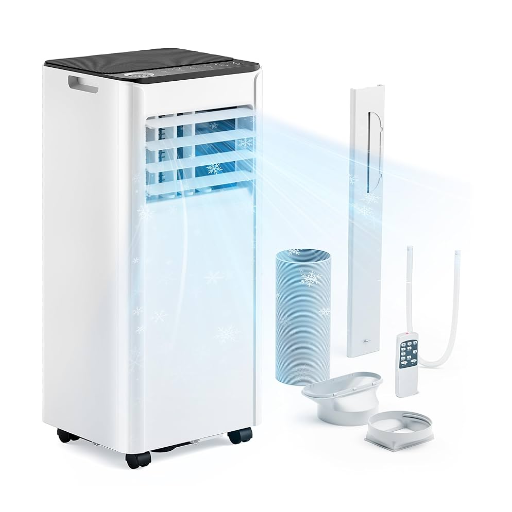
Ideal Conditions for Running an AC
In my opinion, air conditioning units should be run under specific conditions for maximizing efficiency and longevity, in addition to guaranteeing the utmost comfort to the occupants. For example, use an AC when outdoor temperatures are fairly high, mostly when they are above 75°F (23°C), as these systems work best to cool and dehumidify in warmer environments. Moreover, do run AC units when the inside humidity levels cross 50%. Having balanced humidity avoids mold growth and improves air quality.
Another important consideration for operating an air conditioning system is that the space insulation is proper. AC systems’ performance depends heavily on the thermal insulation provided by the window, door, and wall. While running an air conditioner through a hot summer day, keep the heat exchange to a minimum level by closing all windows, sealing all air leaks, and, if possible, blocking out heat gain with insulated curtains or blinds. When these things are achieved, the system can work more efficiently by keeping the temperature stable and energy from being wasted.
At the end of the day, I find that, depending on external factors such as peak electricity demand and weather fluctuations, the best time for AC operation may vary, too. For example, operating an air conditioner during off-peak hours could result in cost savings, especially in areas with variable utility pricing. Further, utilizing smart thermostats or timers enables highly refined control and scheduling of AC use to meet specific cooling requirements, thus favoring energy conservation. Meanwhile, I can figure comfortably along with balancing energy conservation and system longevity by realizing these conditions.
When is a Dehumidifier Most Effective?
A dehumidifier works best when the environment has a relative humidity over 50%, for above this threshold, conditions become uncomfortable and may invite mold growth as well as damage to some items within indoor spaces. High humidity, in such instances, is in warm, wet ambient conditions or seasons with plenty of sunshine and rain. A dehumidifier mainly removes excess water from the air to lower the relative humidity levels to reduce such hazards and maintaining comfort within the room. Proper humidity in the range of 30% to 50% promotes a healthy and comfortable environment under the care of a dehumidifier.
It is best to use a dehumidifier in a closed space with little air exchange. These places can include, but are not limited to, damp basements, laundry areas, or bathrooms lacking in ventilation. These machines provide quite a lot of help toward reducing dampness and, therefore, among other allergens, dust mites and mold spores. Temperature is another factor that should be considered. Most dehumidifiers perform well above 60°F (15.5°C), but below this temperature, a desiccant dehumidifier or a unit rated for low-temperature operation works best, avoiding frost buildup on the coils.
One way to increase the effectiveness of a dehumidifier would be to ensure the size is appropriate for the environment it is located in, as well as the way it has been set up. Dehumidifiers with a higher extraction capacity (pints per day) are better suited to large areas or areas with considerable humidity. Placing the dehumidifier in the center of the room, ensuring nothing is obstructing the air intake or exhaust, will allow its air to circulate freely and capture as much moisture as possible. Apart from selecting a dehumidifier for your environment, maintaining your dehumidifier is equally important: Keep an eye on cleaning the air filters from time to time and regularly empty the collection tank if it is a unit without continuous drainage. Understanding the interaction between these factors and an operating environment makes it possible for the user to realize the best performance from their dehumidifier, thereby contributing to improved air quality inside and lasting building integrity.
Seasonal Considerations for Both Appliances
By considering seasonal factors, it becomes natural that the use of air conditioners or dehumidifiers needs to be altered depending on the unique conditions brought about by the passage of different months within the year. During the scorching hot days of summer, the necessity for simultaneous operation arises with the air conditioning unit working for cooling and the dehumidifier maintaining indoor moisture at ideal levels to the prevention of mold and mildew. Keeping a watch on the relative humidity gains priority during this season, for it being over 60 percent would reduce the quality and comfort of indoor air.
Dehumidifiers might be called into use in winter as well, particularly in areas susceptible to condensation, basically because outdoor temperatures remain low and ventilation within heated spaces remains inadequate at best. Cold weather tends to foster the presence of excessive moisture on windows and walls, thereby posing a grave threat to dampness or damage to the structure. Energy-efficient homes or those with airtight construction further highlight the need for a dehumidifier to control moisture within.
Also, being a seasonal affair, both these gadgets need to be maintained well for optimum results. Before the summer arrives, ensure you inspect and clean air conditioner coils, replace filters, and check refrigerant levels. Also, for the dehumidifier, check, clean, or clear any blockages to the collection tank or drainage system, and make sure the air intake is free from impediments during operation. Such maintenance, in turn, optimizes energy efficiency and greatly contributes to extending the operational lives of the two appliances, hence the safe delivery of better results irrespective of seasonal changes.
References
- Studies show that the energy efficiency of dehumidification technology can be significantly improved through simple and cost-effective retrofitting. -This research explores the cost-effectiveness of improving dehumidification systems in large facilities in Florida.
- Research on high-efficiency air conditioning systems indicates that vacuum membrane dehumidification technology can greatly enhance energy efficiency. -This dissertation provides an in-depth analysis of vacuum membrane dehumidification in advanced air conditioning systems.
- In humid climates, studies on mechanical ventilation and dehumidification energy use show that dehumidifiers often have lower energy efficiency factors than assumed. -The research also notes that air conditioners may have longer run times in certain scenarios.
Frequently Asked Questions (FAQ)
Q: Is it cheaper to run an AC or a dehumidifier?
A: In many cases, it can be cheaper to run a dehumidifier, especially in humid environments where moisture control is needed. Dehumidifiers generally use less electricity than air conditioners, making them a more cost-effective option for removing excess humidity from the air.
Q: How does running a dehumidifier affect energy bills compared to an AC?
A: Running a dehumidifier might lead to lower energy bills compared to an air conditioner. Since a dehumidifier uses less energy and can effectively remove humidity without cooling the air, it can be a more economical choice for maintaining the indoor climate.
Q: Can a dehumidifier and an air conditioner be used together?
A: Yes, using both a dehumidifier and an air conditioner can create a perfect balance in managing indoor humidity and temperature. While the AC cools the air, the dehumidifier removes excess moisture, which can enhance comfort levels.
Q: What are the upfront costs associated with a dehumidifier?
A: The cost of a dehumidifier can vary based on its capacity and features. While the upfront cost may seem significant, many homeowners find that the long-term savings on energy bills make it a worthwhile investment when compared to running an AC unit.
Q: Do portable air conditioners work as effectively as dedicated dehumidifiers?
A: Portable air conditioners can remove humidity as part of the cooling process, but they are typically less effective than dedicated dehumidifiers. A dedicated dehumidifier is designed specifically for dehumidifying the air, which can result in better moisture control.
Q: Is running an AC for cooling effective in preventing mold or mildew?
A: An air conditioner may help prevent mold or mildew by cooling the air and removing some moisture, but it is not as effective as a dehumidifier. For optimal moisture control, especially in hot and humid conditions, a combination of both appliances is recommended.
Q: How do temperature and humidity control affect comfort levels indoors?
A: Maintaining a balance between temperature and humidity is crucial for comfort levels indoors. High humidity can make temperatures feel warmer, while effective dehumidifying can help reduce this sensation, making it easier to maintain a comfortable environment with either an AC or a dehumidifier.
Q: What should I consider when choosing between a dehumidifier and an AC?
A: When deciding between a dehumidifier and an AC, consider your specific needs for cooling and moisture removal. If your primary goal is to control humidity without the need for significant cooling, a dehumidifier can be a cheaper option. However, if cooling is also essential, an air conditioner may be necessary.
Q: How does using less powerful appliances affect energy consumption?
A: Using less powerful appliances, like a dedicated dehumidifier, can significantly reduce energy consumption. They are designed to efficiently remove humidity while using less electricity, making them a smart choice for energy-conscious homeowners looking to lower their bills.

